Film Identification
Film Characteristics
Cellulose Acetate Visual Characteristics
- May be imprinted or embossed w/ "Safety" along the outer edge
- Look for a U-shaped notch code on sheet film from Kodak prior to 1940 (first notch from the right when the film is held with the notches in the upper right corner)
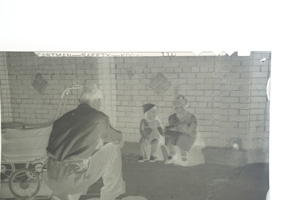

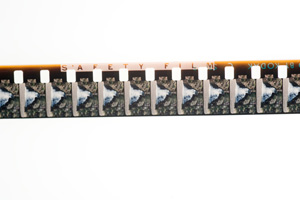
Cellulose Acetate Deterioration Characteristics
- Detect a vinegar smell (acetic acid)
- Warping, buckling, twisting (especially along edges, not just a slight "wavy")
- Channeling – the cellulose acetate base shrinks and distorts and air pockets form "channels" between film base and emulsion. May see crystals in the channels which are recrystallized plasticizer
- Dimpling or orange peel texture from small air bubbles
- Film base becomes brittle (usually after severe channeling)
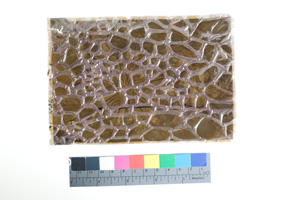
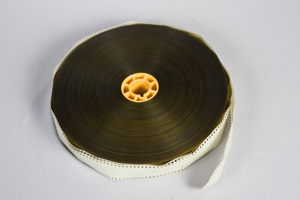
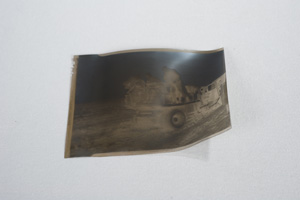

Cellulose Nitrate Visual Characteristics
- May be imprinted or embossed w/ "Nitrate" along the outer edge
- Look for a V-shaped notch code on sheet film from Kodak prior to 1940 (first notch from the right when the film is held with the notches in the upper right corner)
- Film base may be slightly yellow or tan even without deterioration

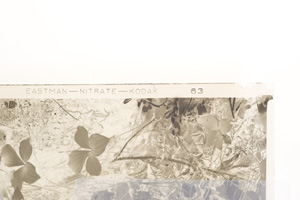
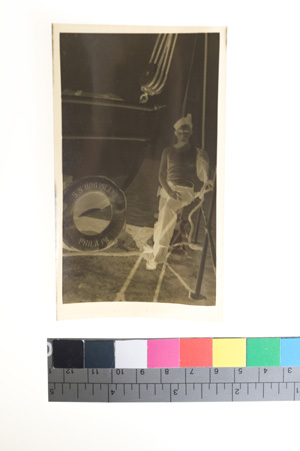
Cellulose Nitrate Deterioration Characteristics
- Amber, brown discoloration
- Silvering mirroring (acetate film can also have silver mirroring, but is more prevalent in nitrate film)
- Fading of image (most prevalent in this type of film, but can also occur in other film bases as well)
- Emulsion becomes tacky
- Noxious odor, acidic gases
- Film softens, viscous substance on surface, emulsion may liquify
- Film turns to brown powder
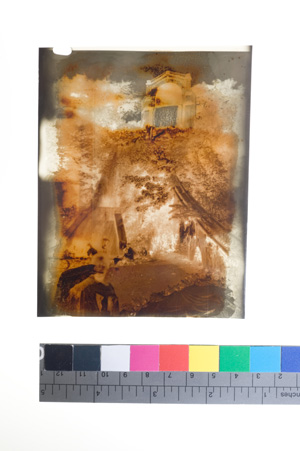
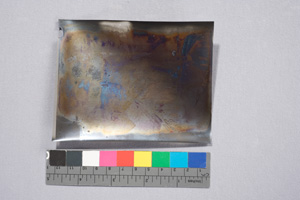
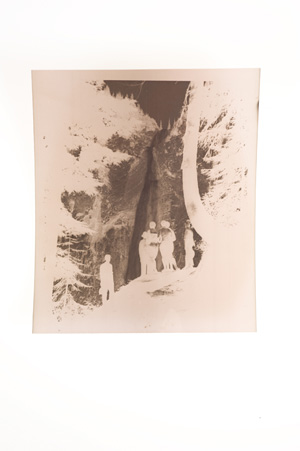
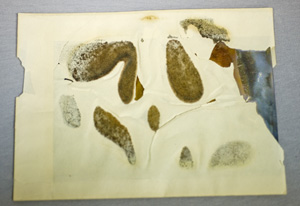
Polyester Film Visual Characteristics
- May be imprinted with "Estar" if manufactured by Kodak
- May be imprinted with "Cronar" if manufactured by DuPont
- Some polyester can even be imprinted with "Safety" and confused with cellulose acetate
- No warping, flat
Polyester Film Deterioration Characteristics
- Polyester film has much greater chemical stability than cellulosic films, and it has virtually no visual deterioration characteristics inherent to the film base itself
- However, black-and-white polyester film may undergo characteristic silver image deterioration (discoloration, silvering, fading) caused by poor processing (resideual chemicals)
- Color polyester filim will fade at room temperatures and should be kept in cold storage due to the instability of the color dye image
Polarization Test
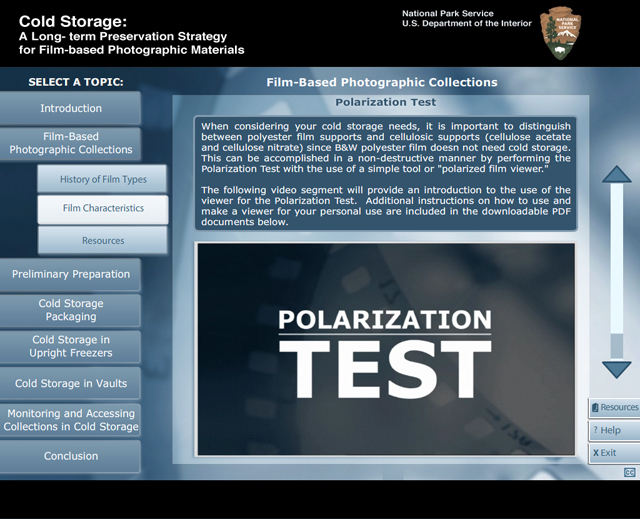
Polarization Test
The polarization test is a simple, non-destructive method to identify the types of film in your collection. This test involves the use of a simple tool which relies on the properties of light as it travels through two pieces of polarized film.
This tool can be used to help you identify a piece of film as polyester or cellulosic, but it cannot be used to differentiate between the cellulose acetate and cellulose nitrate films. This identification is important because all cellulosic film requires cold storage, and most polyester films are stable in a normal archival environment. Here's a brief demonstration on the use of this tool.
This is a piece of polyester film, and as most films, the center of the film is very dark, so it's hard to get a good read on the film through the polarizing lens. however, if you take a part of the film that is light, like along the edges generally, put it between the viewer, hold the viewer up to the light and look through it, and if it's a polyester, you'll see what are called interference colors, or the reds and green colors. If you take a piece of cellulose acetate film, do the same thing, find a spot that's light, put it between the viewer, the two polarized films, hold it up to a light source, it will be dark. It will be dark black or blue and there will be no interference colors. This identification technique comes in very handy if the film is in relatively good condition and also if it's not edge marked and you can't readily tell if it says nitrate or safety.
